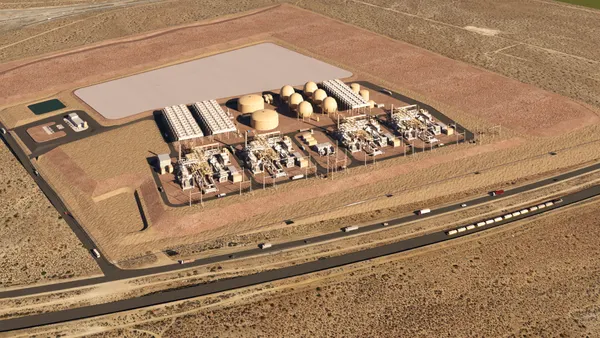Dive Brief:
-
After 159 years, the lead-acid battery is getting an overhaul that aims to move it into the next generation of advanced batteries.
-
The Department of Energy's Argonne National Laboratory signed an agreement this week with 14 members of the Advanced Lead Acid Battery Consortium to use advanced X-ray technology to see if they can increase the potential of lead batteries.
- Using the X-ray beam technology at Argonne's Advanced Photon Source facility, the investigators will be able to better understand the interactions inside a lead battery while it charges and discharges.
Dive Insight:
Lead-acid batteries are well established in both automotive and industrial settings and have been used for utility energy storage. But they have fallen behind competing technologies, particularly lithium-ion batteries that have captured about 90% of the battery market for stationary energy storage. The researchers at Argonne are working to make the lead battery more appealing to the automotive industry and the power grid.
The high energy density of lithium-ion batteries makes them a good match for the expanding electric vehicle market, which has brought down their cost. But lead batteries still have advantages.
In recent years, companies have developed lead batteries that are capable of long cycle and calendar lives. Lead batteries also do not pose the same fire risks as lithium-ion batteries, making them more suitable for residential applications.
Lead is also the most efficiently recycled commodity metal, and lead batteries are the only battery energy storage system that is almost completely recycled. Over 99% of lead batteries are collected and recycled in Europe and the United States.
"We are particularly interested in the lead sulfate crystal growth and dissolution process, and in learning how to control the latter in a more effective manner," Tim Fister, an Argonne materials scientist, said in a statement.
The lead sulfation issue limits lead battery performance to less than half its potential. Tapping a portion of that unused potential would result in even better low-cost, recyclable batteries for mobile and stationary market applications, he said.
After the researchers better understand the processes taking place in the battery, they will begin analyzing how the addition of different additives could improve lead battery performance.
"Once you understand the complex chemical interactions inside these batteries, you can start to propose solutions to further extend their life," said Venkat Srinivasan, director of the Argonne Collaborative Center for Energy Storage Science, in a statement.
The 14 Advanced Lead Acid Battery Consortium members joining the agreement are: Crown Battery Manufacturing, Doe Run Resources, East Penn Manufacturing, EnerSys, Exide Technologies, Johnson Controls, NorthStar Battery Company, RSR Technologies, Trojan Battery, Superior Graphite, Microporous, Cabot, Borregard Lignotech and Advanced Battery Concepts.













